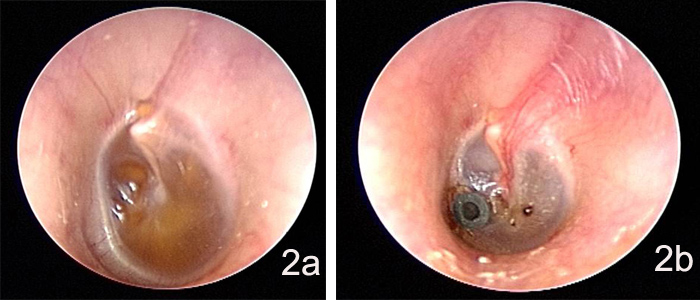Home / Ear Disease & Hearing Loss / Acute Otitis Media
Acute Otitis Media
Call +65 8125 3580
for 24 by 7 appointment
What is Acute Otitis Media?
Acute inflammation of the mucosal lining of the middle ear is called Acute Otitis Media (AOM). It is a common condition affecting children, though adults can be affected as well. It has been reported that approximately 70% of all children will experience one or more attack of AOM before their second birthday. AOM often results from a viral or bacterial upper respiratory tract infection which extends to the middle ear through the Eustachian tubes located behind the nose. The common bacterial responsible are Streptococcus pneumoniae, Haemophilus influenzae, Moraxella catarrhalis, and Streptococcus pyogenes though Staphylococcus aureus, Streptococcus viridans, and Pseudomonas aeruginosa have also been implicated. Inflammation in the nasopharynx extends to the eustachian tube causing blockage of the Eustachian and inability of the tubes to equalize the pressure in the middle ear.A negative pressure results in the middle ear causing a sensation of “blocked ears”, Prolonged negative pressure in the middle ear and the acute inflammation leads fluid (inflammatory exudate) in the middle ear.

The pressure build-up due the fluid and the acute inflammation causes the ear drum to bulge and throb (Figure 1b. Compare the inflammed left tympanic membrane with the normal tympanic membrane in figure 1a. Normal tympanic membrane is slightly translucent and is able to reflect light. The inflammed tympanic membrane is very red, swollen and bulging). The pressure within the middle ear results in ear pain which can be quite severe causing the child to scream.Occasionally the ear drum may rupture from the pressure. This will ease the pain somewhat but the ear will start to discharge. The discharge may be pus like, thin and watery or blood stained. The discharge may last 1-2 weeks and in most cases the perforation in the ear drum heals. In some cases, the perforation may persist and may become chronic.In most cases the inflammation and the infection recovers in 1- 2 weeks. The fluid in the middle ear resorbs and the ear slowly returns to normal. In figure 1c, the swelling and the inflammtion of the ear drum has reduced and as the ear drum becomes translucent again fluid level within the middle ear can be seen. Symptoms of acute infection will vary with age. For neonates and infants irritability and feeding difficulties may be the only symptom. Older children may have fever and complain of ear pain. Ear discharge will indicate the ear drum may have perforated.

Recurrent infections may cause persistent fluid in the middle ear. With time the fluid becomes thick and glue like. This condition is sometimes referred to as“Glue Ears”. In figure 2b the ear drum in not translucent but has a straw like colour. This due to the thick fluid within the middle ear. Chronic otitis media will cause glue ears resulting in conductive hearing loss. Diagnosis is usually established by pneumatic otoscopy or oto-endoscopy. Pure tone audiogram and tympanogram may be required in children presenting with glue ears. Treatment of Acute Otitis Media is targeted at controlling the infection with antibiotics and pain relief. Patients with glue ears may require a procedure called Myringotomy and Grommets Insertion (Figure 2b)
Are you or your child experiencing symptoms of acute otitis media? Speak to A/Prof Sethi to find out if this is the medical condition you or your child is experiencing at +65 8125 3580. Or book an appointment with A/Prof Sethi for a consultation on your symptoms and treatment options.
